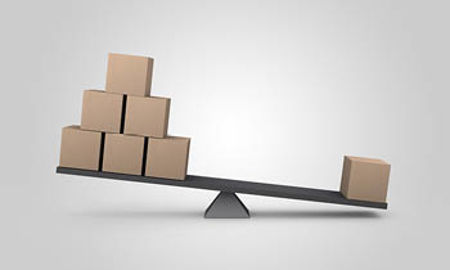In the midst of a China/ United States trade war with an ever-evolving end date, American consumers are left wondering how exactly, if at all, they’re impacted by tariffs that threaten to rise to 25 percent in the absence of a trade deal between the two countries. While US President Donald Trump claims that current tariff levels, now 10 percent, are raising billions of dollars for the US government, the consumer isn’t necessarily seeing this money.
So, what is a tariff and how does this specific potential increase trickle down to the consumer, companies, and components our shoppers deal with? Read on!
What is a tariff?
Simply put, a tariff is a tax placed on a group of imported goods by the government. In theory, this increases the appeal of domestic goods that are not under a tariff--in this case, from China. Tariffs make it more expensive to import from a particular place.
There are a variety of reasons for tariffs, but they’re usually the result of trade negotiations resulting from a trade deficit in which the amount important and exported between two countries doesn’t match. The result is an import tax that initiates different buying behavior (domestic versus foreign) to avoid the tariff or continued reliance on the foreign entity at an additional cost to consumers.
What goods does the China/US tariff impact?
You can place a tariff on almost anything and the United States isn’t letting China off easily. The 10 percent tariff impacts everything from baseball gloves to refrigerators--in total, the list is 194 pages. President Trump has threatened to add the tariff onto an additional $267 billion in Chinese goods. While tariffs can vary, this one is particularly aggressive on consumer goods.
What does this mean for me?
In 2018, tariffs rose on washing machines which saw an increase in the price of laundry equipment to the tune of 16 percent between February and May. Consumers will pay more for a lot of goods and services, which may decrease consumer spending overall. It is difficult to predict the exact outcome of such a move, but there could be more significant economic implications.
What does this mean for the future of my company or the company I work for?
Unfortunately, tariffs can feel very disruptive in the context of business, because there is a large unknown. Tariffs put pressure on profits and make it difficult to plan for the future because they offer an additional (and potentially changing) expense. For some companies, this means changing operations to be more efficient out of an abundance of caution. Jobs or units can be forced to relocate because of the uncertainty tariffs can bring. Companies, and their employees, might expect to plan for things like a decrease in wage growth and overall company expansion.
What can I expect from Online Components?
Despite uncertainty throughout the trade negotiation, you can count on us to deliver in the way that we always have. We vow not to increase prices or add surcharges for orders placed before or after the tariff policy--even if it rises to 25 percent. Instead, and as your partner, we’re going to support American businesses by absorbing the tariff so that you can continue to direct your time and money toward efforts that are important to you.
If you’re curious, look for the Tariff Free Zone logo on our website next to all affected products. Online Components is a tariff free zone, and we’re committed to maintaining our status as the most flexible distributor in the industry.
contact us:
 EN
EN
 English
English
 Chinese
Chinese
 Italiano
Italiano
 Portuguese
Portuguese
 Deutschland
Deutschland
 French
French
 Russian
Russian
 Japanese
Japanese
 Turkish
Turkish
 Korean
Korean
 Spanish
Spanish
 my account & orders
my account & orders

